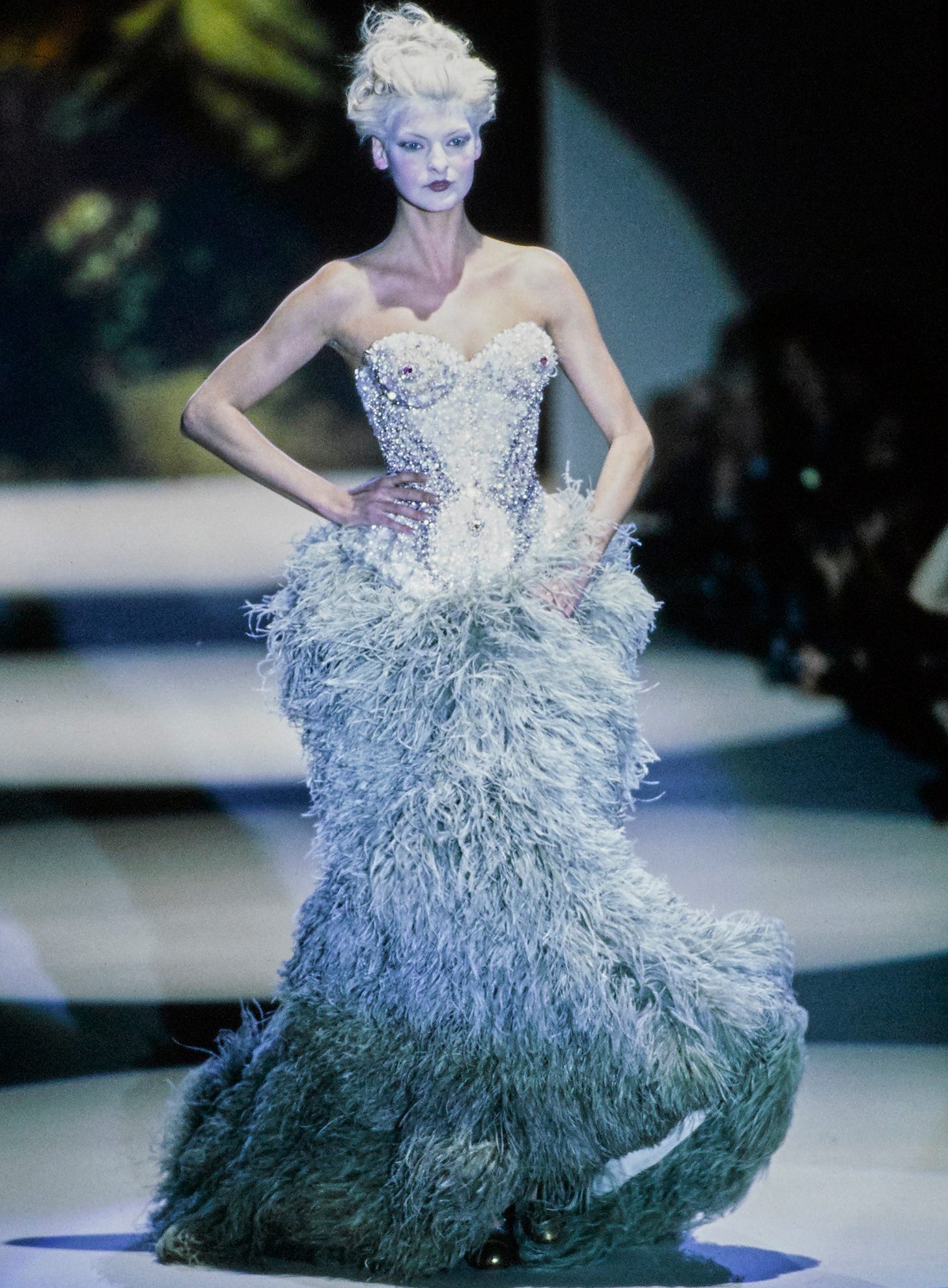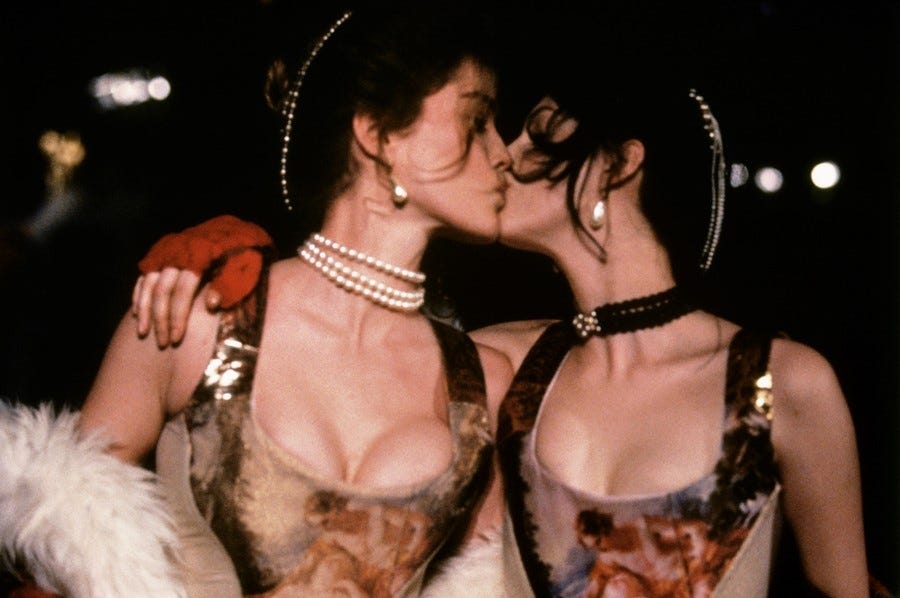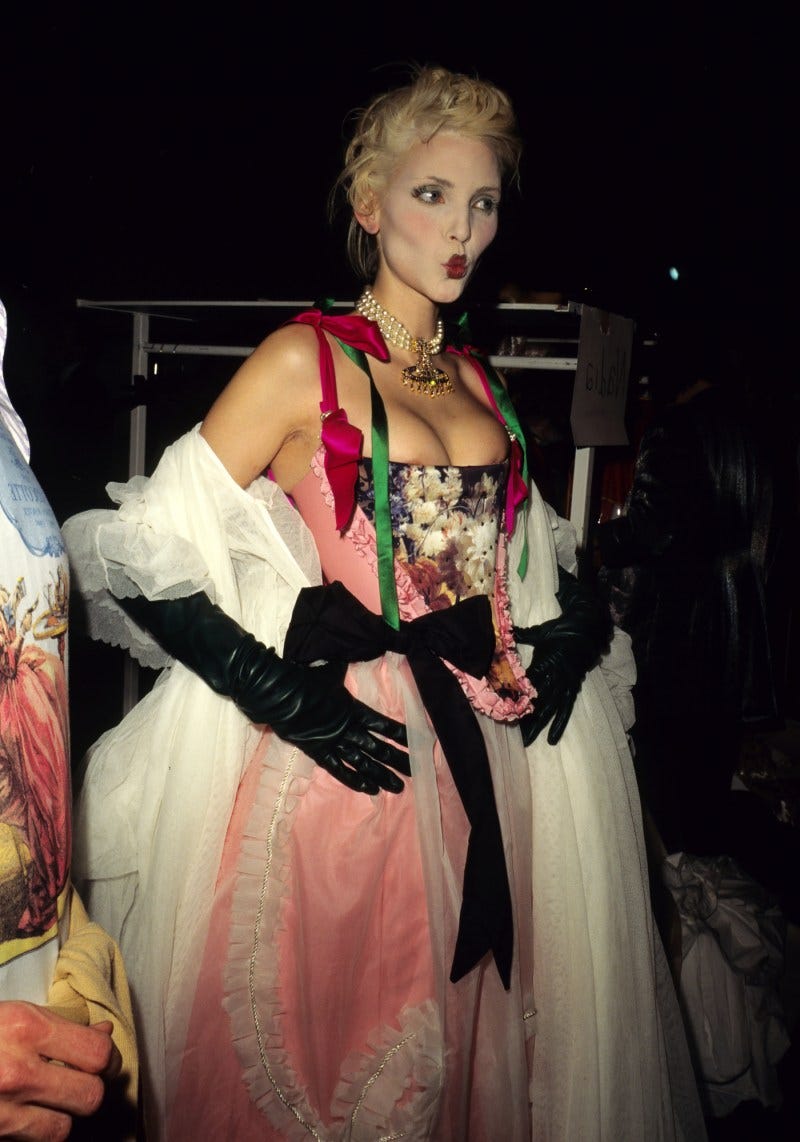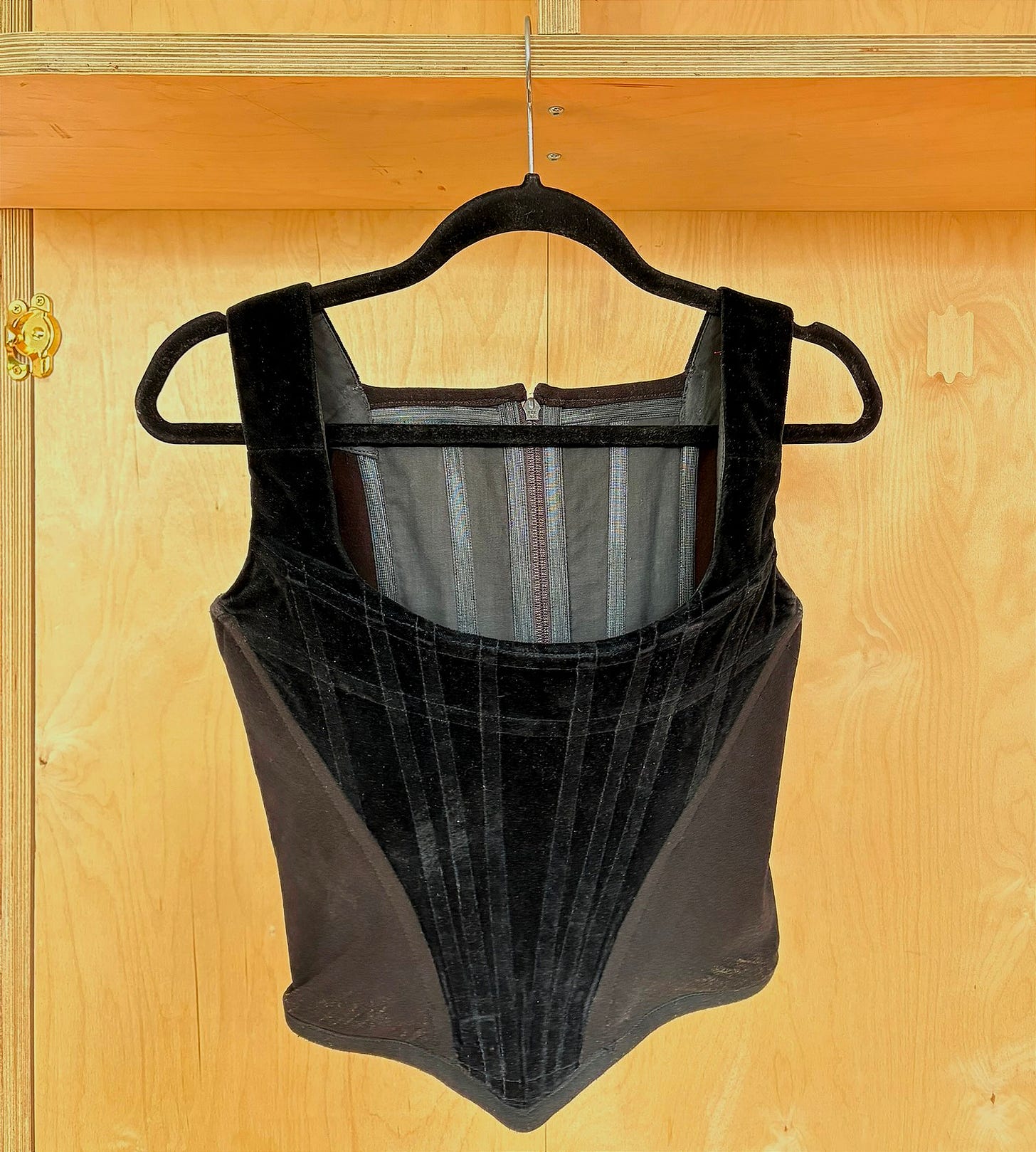Vivienne Westwood Corsets, Punk Historicism and the Trend Cycle
Archival in Nature item 6: a 1990s Red Label corset
Vivienne Westwood has a left an expansive legacy, with her eccentric image and attitude almost as recognisable as her designs. Across a 50-year career, with over 100 runway shows and countless other collections, she cemented her status as master craftswoman (elevating tailoring and draping to art forms), cultural provocateur (encouraging self-expression and subversion over conformity), and social and environmental activist (campaigning for climate change reform and human rights). Although from avant-garde roots, Westwood built a global fashion empire, with her eponymous brand now generating annual sales of ~£130m1; she was even knighted in 2006 (becoming informally known as 'Dame Viv'). For the last 9 years, creative direction of her label has been led by her partner, Andreas Kronthaler; he became her widower in 2022.
Westwood’s designs were heavily influenced by British heritage and punk subculture. Despite getting her start with a BDSM and DIY-inspired boutqiue named SEX (which she opened with Malcolm McLaren, of The Sex Pistols), her continued punk standing has been called into question2. As in this Fetch piece, which decries the “willing commercialisation of authentic political movements”, Westwood and her label have been criticized for decoupling punk's aesthetic from its radical politics. It's undeniable that she helped to shape the punk movement in the 1970s, and that she was counter-cultural in many regards, from her demonstrations3 to her self-presentation (acid hair tones, ripped tights, vaudeville makeup). But some anti-establishment antics aside, she was still in the business of hawking luxury apparel. And even then, whilst many of her designs are beautiful and their prices reflect the skill and labour involved, her label charges $400+ for non-organic cotton t-shirts4. That's probably not punk.

Less contentious than her punk cachet is the influence of eighteenth century fashion on Westwood's designs. Mining a romantic5 heritage, Westwood was known for lifting traditional shapes and fabrications from their historic contexts and blending them with contemporary and 'low-culture' codes (bustle skirts from ripped tartan, harris tweed with safety pins, bondage-wear with tailoring). In the case of her corsets, which she began making in the 1970s, she was particularly interested in refashioning underwear as outerwear - partly as pure provocation and partly to reimagine a highly restrictive garment, intended to be hidden, as visible and celebratory of the body. Her interest in corsetry was developed into the '80s, when the velvet versions were launched (likely first showing in the 1987 runway collection, 'Harris Tweed'). Most Vivienne Westwood collections since then have featured corsetry, sometimes on men, cementing their historicist and fetish-tinged aesthetic as the DNA of her brand.
When I started looking out for a Vivienne Westwood velvet corset, it was 2019, and I was partially spurred by seeing FKA Twigs's impressive collection of some of the most rare versions. By the time I found this 1990s Red Label6 one in black velvet in my price range, it was early 2022, and corsets had fully worked their way into peak mainstream resurgence. I'd argue they're now in the latter stages of their trend cycle, declining in popularity, as the frequency of global google searches for 'Vivienne Westwood corsets' indicates (I wonder if the small spike in 2020 had anything to do with the release of the first series of Bridgerton)

I’m not immune to trends, though it pains me to say it. But I maintain that even if inspired by a burgeoning trend, you should only buy something if it genuinely fits your personal style7. If you're still worried about going cold on something that you bought when hot (because it’s become 'cheugy'8), or - like me - you buy nice things but are too afraid to wear and damage them, you can hedge your bets by giving yourself the option to resell for a good price. You don’t need to be a vintage expert to do this, just consider factors like quality, condition, collectability, brand. And it’s not about flipping items for 10x their price in a month (unless you’re making it your trade), but gauging long-term value. The allure of fast fashion lies in its low cost, duping us into thinking we can cheaply experiment with trends. But with patience, good vintage investments can recoup their value9. Of course, like any form of trading, this won’t always hold true, but you can bet that 10 Oh Polly corsets at $50 each won't wear or resell as well as one Westwood. In fact, based on current prices for this velvet style, I could make +25-30% - even at the end of its trend cycle. Dame Viv the may not have been punk ‘till the end, but she was always good at making a statement: "Buy Less, Choose Well, Make it Last".
Vivienne Westwood Ltd reported annual revenues of £133m in 2023, reflecting a tripling since 2016
And not just in the way Avril Lavigne does in this well-memed interview clip
Which are very likely produced outside of the EU (for cheap materials and labour).
Maybe even capital ‘R’: debate.
A sister line to the mainline, founded in the 90s and focused on a slightly younger customer. It was also more tuned to wearability and British heritage (showing runways in London).
I might get into this term at a later date.
As the TikTok creator Rian (@thatadult) noted in a great video a while back, it takes either a total lack of awareness or a lot of self-assurance and purposeful in-group signalling to wear something that's at the end of its trend cycle.
And, unlike stocks, you can wear them in the meantime










